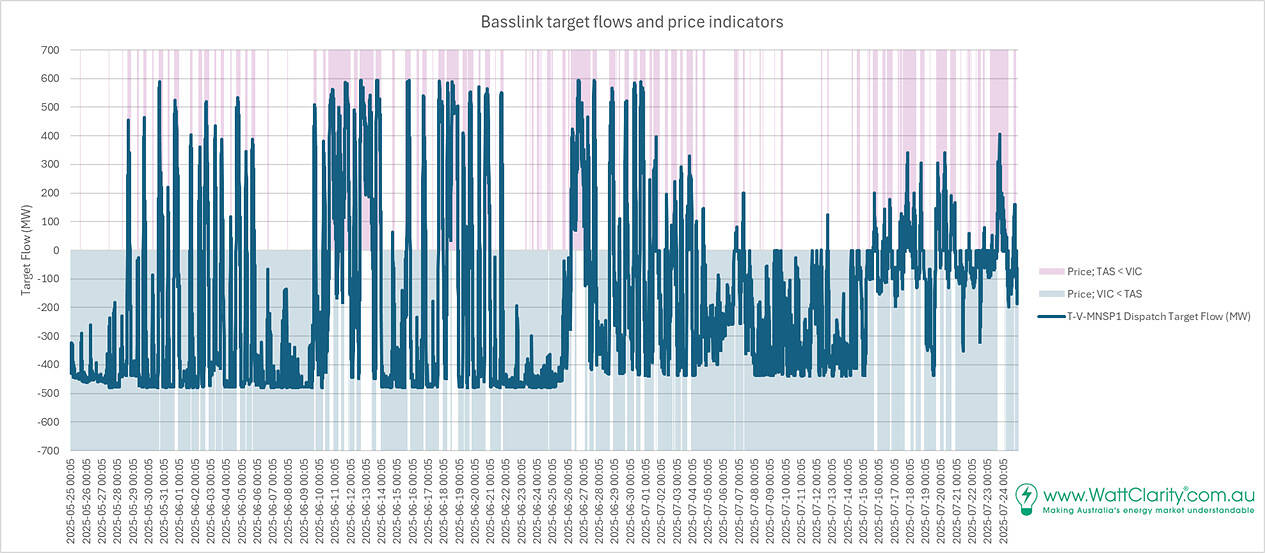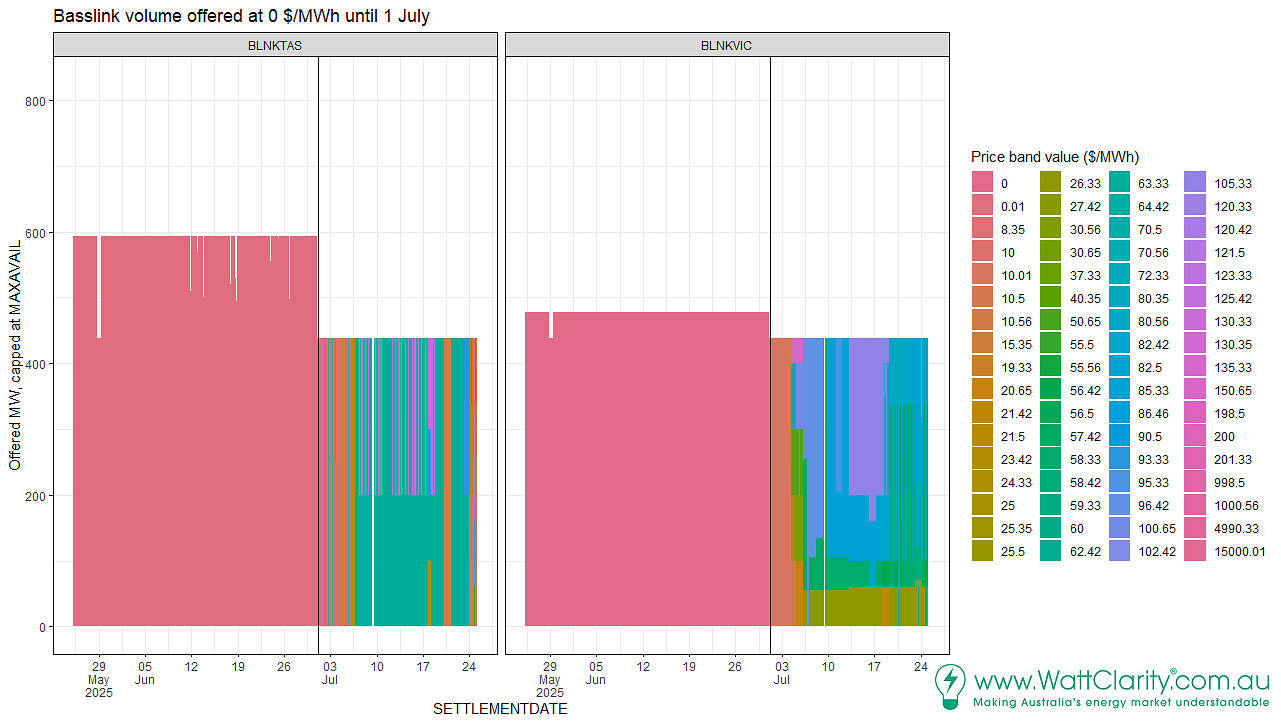We gather the network services agreement between APA Group (owner of Basslink) and Hydro Tasmania ended on 30 June 2025.
An agreement on bidding the link
Reports indicate the agreement commenced on 21 October 2022, forming part of the sale of Basslink to APA Group . A Hydro Tasmania update from that time describes the agreement, including that:
- The agreement required APA to bid Basslink at 0$/MWh (unless otherwise instructed by Hydro Tasmania),
- Hydro Tasmania was entitled to receive the IRRs (inter-regional residues).
In effect, we interpret this to mean that that Basslink would transport energy from VIC to TAS in line with price difference and Hydro Tas would earn the interregional residue from the transported energy.
APA back in control
Now, since 1 July 2025, with the agreement no longer effective, APA Group takes back control of the bidding strategy for Basslink. It isn’t until 1 July 2026 that the asset may become regulated.
Observations
Using flows as ‘target’ from the dispatch solution.
In May and June:
- When TAS energy is cheaper than VIC the basslink flow is typically northward (positive), and vice versa in the alternate condition.
Basslink flows still appear to be in line with price difference although, since July and relative to June we observe:
- Increased periods where target flows have been negative, and
- Reduced periods of positive (northward) flows.
- More occasions with 0 MW flow while price difference supports northward flow.
While flows will depend on prices, they will also depend on the offered volumes which can be different in each direction.
Bids
For a deeper evaluation, Global-Roam’s hosted MMS comes to our aid. We query the Basslink MNSP bids.
It’s clear APA have taken back the reins.
Prior to 1 July, volume offered up the to MAXAVAIL (maximum availability) was priced at zero (0.01 for BLNKTAS) in both directions, in accordance with the agreement.
On 1 July new bid price bands (from the start of the trading day indicated by a black vertical line), and a lower MAXAVAIL were applicable.
With the change in bidding the link’s capacity was effectively moved to a price of 10$ (both directions). The volumes and price bands have since moved on multiple occasions since 1 July. Tending towards values far higher than $0 or even $10 per MWh.
This has meant Basslink wouldn’t flow until interregional price differences exceed those price levels, meaning potential for more frequent 0 MW flow periods when VIC and TAS prices are close.
Impacts
In an APA response to the determination converting Basslink to a regulated asset (January 2025) risks to utilisation and customer outcomes, of operating as an unregulated link (present condition) were raised:
- “[Anticipated] Flows are reduced compared to history and what would occur under regulation, as a new (non-zero) cost is associated with transfers across the link.”
- The link receives no revenue for the provision of FCAs transfers therefore not incentivised to facilitate that.
- “An increase in zero-flow periods will increase the cost of Tasmanian and mainland frequency control services” and
- “Commercial incentives will see the frequency controller turned off unless it assists to increase flow or price separation. This will require Tasmania to locally procure FCAS and increase FCAS prices, impacting Tasmanian network flows controlled via the TasNetworks Network Control System Protection Scheme, generation and energy prices”.
amongst other expectations contained in the response.
We’ll keep an eye on this one in the leadup to July 2026.




Leave a comment